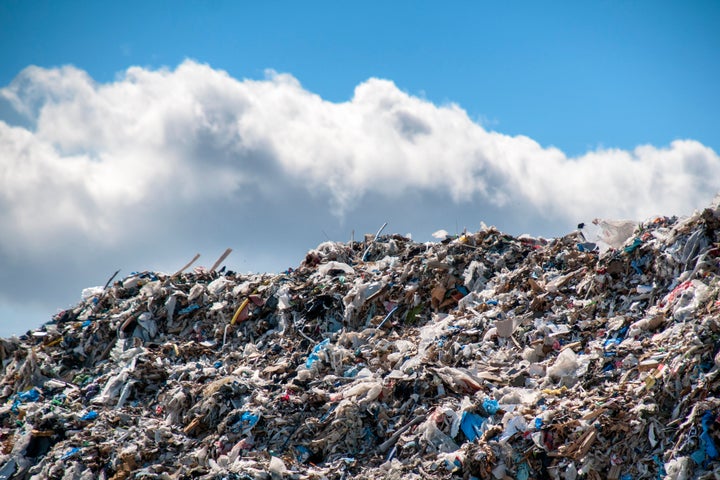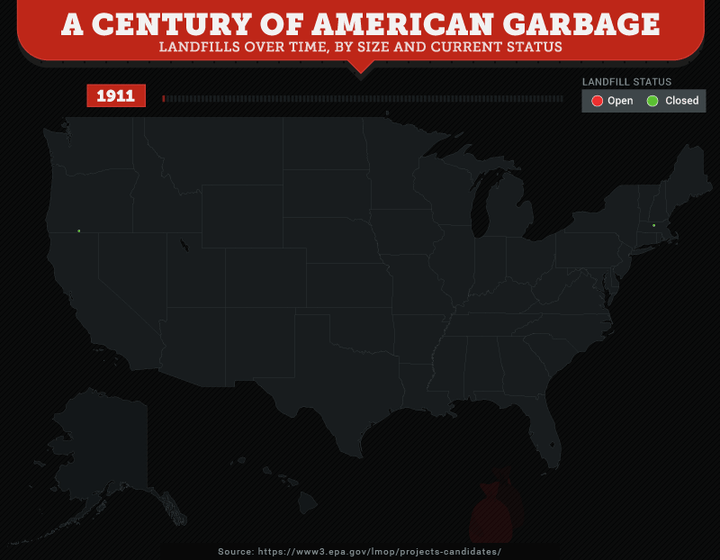
Americans create a lot of trash ― 254 million tons of it each year. But the landfills that house all that garbage aren’t distributed equally.
The recent Land of Waste report from Save on Energy, a company that lets consumers compare electricity plans, uses U.S. Environmental Protection Agency data to visualize the spread of landfills across the U.S. and track which states are holding the most trash.
Their graphic shows landfills opening and closing across the country, going back one hundred years. Each dot represents a landfill; the larger the dot, the larger the area of the landfill it represents. Landfills that are currently open are in red, while those that have closed are in green.

In the early 1900s, dumps were essentially just holes in the ground, and cities also disposed of trash in wetlands and in the ocean. In 1976, a federal law passed requiring landfills to be lined to keep harmful runoff from leaching into the groundwater. The “leachate” is collected and treated.
The Save on Energy report also shows which states are currently holding the most trash in their landfills. Nevada has the most trash per person, at 38.4 tons for each resident. California ranks fourth, and, with the largest population in the U.S., has over a billion tons of trash in its landfills.

Landfills are a pressing environmental concern because of the methane released by decomposing trash. The greenhouse gas is much more potent than carbon dioxide and contributes to climate change. Landfills produce close to a fifth of the methane emissions in the U.S., according to Time.
In an effort to combat the effect of their trash, some cities and states, like New York City and California, have instituted zero-waste policies, meaning they’re trying to divert nearly all materials from landfills.
There are some encouraging trends. The average American is generating less waste than at any time since 1990, according to the EPA. More and more waste is being kept out of landfills, too ― in 2013, over 34 percent of material that could have ended up in landfills was recycled instead.

In recent years, there’s been more attention to the amount of food that Americans throw away, which makes up 28 percent of the material in landfills. Policymakers, companies and activists are slowly working to change this, following the lead of European countries, with changes like requiring people to compost food scraps or making it easier for grocery stores to donate extra food to nonprofits.
See the Land of Waste report to find out where the landfills nearest to you are.
H/T CityLab

